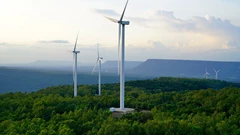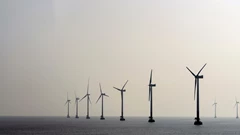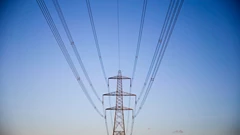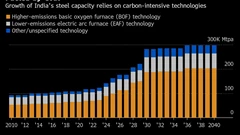At Least Two-Thirds of Global Car Sales Will Be Electric by 2040
(Bloomberg Markets) -- Electric vehicle adoption is accelerating thanks to improvements in battery density and cost, more charging points, and government policies that make driving dirty cars more difficult. Still, if any country is going to meet its net-zero emissions targets in the next 30 years, more needs to be done to clean up road transportation. Here’s BloombergNEF’s view on where the EV industry is headed now.
Picking Up Speed
Passenger EV sales are projected to increase sharply, rising from 3 million in 2020 to 66 million in 2040, according to BloombergNEF’s Economic Transition Scenario. Globally, EVs will represent more than two-thirds of passenger vehicle sales in 2040. Europe and China are leading the transition.

Stepping Off the Gas
Sales of internal combustion engine (ICE) vehicles have already peaked.

The Price Nears Right
In Europe, battery EVs are approaching price parity with ICE vehicles.

Cheaper Charge
Battery prices fell with manufacturing and tech upgrades and higher demand.

It’s Not Just Cars
Buses and two- and three-wheelers will maintain the top EV adoption rates.

The Race to Build More Batteries
As a world leader in manufacturing lithium-ion batteries, China is benefiting from the rising demand for EV battery packs. The European Union is trying to catch up, setting an ambitious goal of supplying enough batteries to meet its own demand by 2025.

Spoiled for Choice
There are more than 500 EV models on the market worldwide.

Going Farther
On average, electric vehicles introduced in 2020 could travel 359 kilometers (223 miles) before needing a charge, up from 166km in 2012.

Power Points
In China and Europe, charging spots more than doubled in two years.

Less Oil in, Less Pollution Out
Alternative drivetrains, fuel economy, and shared mobility will impact oil demand; however, nations still won’t reach net-zero by 2050 without doing more.

Alternative Vehicles
Some EV makers going public are using special purpose acquisition companies.

More stories like this are available on bloomberg.com
©2021 Bloomberg L.P.
KEEPING THE ENERGY INDUSTRY CONNECTED
Subscribe to our newsletter and get the best of Energy Connects directly to your inbox each week.
By subscribing, you agree to the processing of your personal data by dmg events as described in the Privacy Policy.
More renewables news

WEC Energy Offered $2.5 Billion US Loan for Renewable Projects

With Trump Looming, Biden’s Green Bank Moves to Close Billions in Deals

GE Vernova Expects More Trouble for Struggling Offshore Wind Industry

Climate Tech Funds See Cash Pile Rise to $86 Billion as Investing Slows

GE Vernova to Power City-Sized Data Centers With Gas as AI Demand Soars

Longi Delays Solar Module Plant in China as Sector Struggles

Australia Picks BP, Neoen Projects in Biggest Renewables Tender

SSE Plans £22 Billion Investment to Bolster Scotland’s Grid

A Booming and Coal-Heavy Steel Sector Risks India’s Green Goals
















